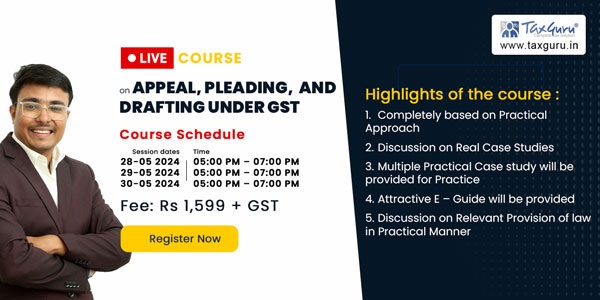Trademarks in India undergo registration processes as per the guidelines laid out in the Trademarks Act of 1999. Applicants file their requests with the Registrar of Trademarks under TM-A by paying the requisite fees, after which it is the Trademark Registry who evaluates the submissions for potential approval or rejection based on the Act’s provisions. Certain trademarks fall under categories explicitly listed in the Act, rendering them ineligible for registration. In this article, Compliance Calendar have penned down the common grounds of refusal under Section 11 of the Trade Marks Act, 1999. Read the full article to understand the Trademark Objection.
Relative Grounds for Refusal:
Section 11(1): Confusingly Similar Trademarks
This section of the Act establishes grounds for refusal based on the similarity of trademarks. If a proposed trademark is identical or too similar to an existing trademark for similar goods or services, it may cause confusion among the public. For instance, words like ‘KASHMIR’ or ‘MANALI’ were rejected due to their indication of a specific geographic origin, creating confusion among consumers.
Section 11(2): Unfair Advantage
Trademark applications may face rejection if they attempt to take unfair advantage of the reputation of a well-known trademark in India or if they could potentially harm the distinctiveness of such a trademark. An example is the rejection of ‘Electrix’ for electric vacuum cleaners, as it was deemed too similar to the common term ‘Electric,’ potentially taking advantage of its established reputation.
Section 11(3): Legal Protection
This section outlines grounds for refusal if the use of a trademark could be legally prevented by passing off or copyright laws protecting unregistered trademarks. An illustrative case involves the rejection of a mark representing parts of a chain wheel and chain, which lacked the distinctiveness required for legal protection.
Section 11(4): Consent Matters
Even if a trademark falls under Sections 11, registration is possible if the owner of the earlier trademark consents to the registration. This provision highlights the importance of obtaining consent to overcome potential refusal based on similarity or unfair advantage.
Names That Can’t Be Registered:
Sections 13 and 14 of the Act one by one names that render trademarks ineligible for registration. Trademarks containing names of chemical elements or compounds in relation to a chemical substance or preparation face rejection. Additionally, trademarks falsely suggesting a connection with a living person may be declined registration unless explicit consent is obtained. Similar restrictions apply to connections with deceased persons within twenty years of the registration application, requiring the consent of their legal representatives.

Examples of Rejected Registrations:
To provide a clearer understanding, let’s explore real-life examples of trademarks that were rejected based on the grounds outlined in the Trademarks Act.
- Common Expressions: Trademarks like ‘Janta’ or ‘Rasoi’ were rejected for being too common. This aligns with the objective of maintaining distinctiveness and avoiding confusion with everyday expressions.
- Descriptive Terms: ‘Ombrella’ for shower bath curtains was not registered as it was deemed descriptive of umbrella-like shower bath curtains. Descriptive terms may lack the distinctiveness required for trademark protection.
- Geographic Indicators: Words like ‘KASHMIR’ or ‘MANALI’ were turned down as they indicated a specific geographic origin. Such trademarks can create confusion about the origin of goods or services, leading to refusal.
- Common Use: The word ‘Heavenly’ for cosmetics was rejected because it is a term in common use. This aligns with the principle of avoiding the registration of generic or commonly used terms.
- Similarity to Common Terms: The rejection of ‘Electrix’ for electric vacuum cleaners was based on its similarity to the common term ‘Electric.’ This emphasizes the need to avoid trademarks that closely resemble widely used terms, preventing unfair advantage.
- Lack of Distinctiveness: A mark consisting of a representation of parts of a chain wheel and chain with a blank space was refused registration. The lack of distinctiveness in the representation contributed to the rejection.
How to avoid Trademark Objection under section 11
The trademark registration process in India requires a deep understanding of the grounds for refusal outlined in the Trademarks Act of 1999. From relative grounds related to similarity and potential unfair advantage to specific names and real-life examples of rejected trademarks, applicants must carefully consider these aspects to enhance the likelihood of successful registration.
By being mindful of these restrictions, businesses and individuals can develop trademarks that not only represent their brands effectively but also comply with the legal framework governing trademark registration in India. However, it is always suggested that you please take help of some IPR Firms who have knowledge of the common objections and can help you in filing Reply to Examination Report (MIS-R) and in the case of Ready for Show Cause Hearing, they assist you in attending the Trademark Hearing as well. It is also important to to note that submission of evidences before hearing.
If you need further clarification or personalized consultation on trademark objection under section 11, our IPR team at Compliance Calendar will be happy to help you. Please feel free to connect with us via email at info@ccoffice.in or by calling us at +91 9988424211.





























